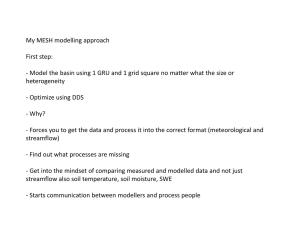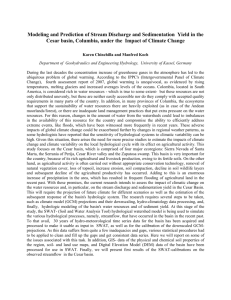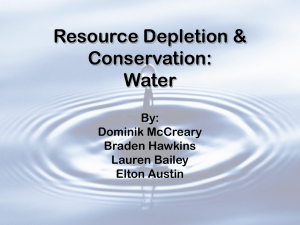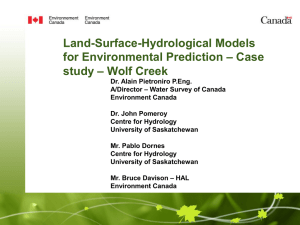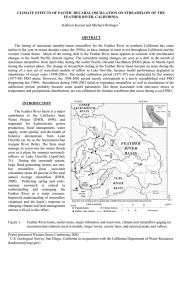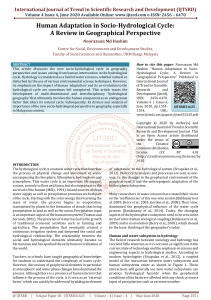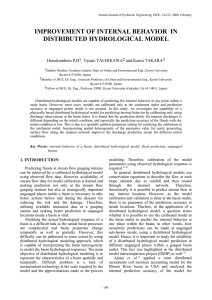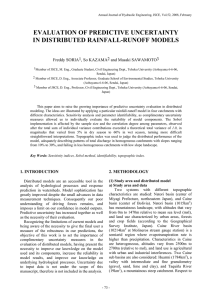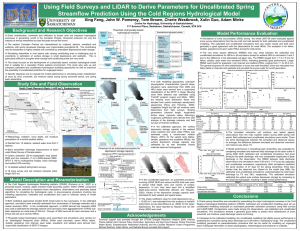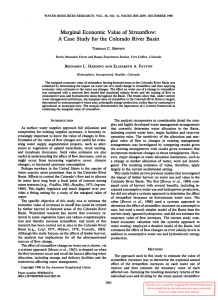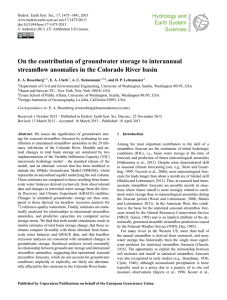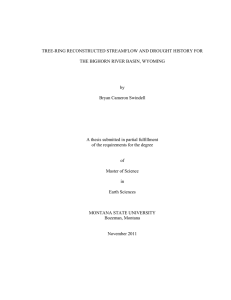PROCESSES AND PARAMETERIZATION OF HYDROLOGICAL CONNECTIVITY IN NORTHERN LANDSCAPES
advertisement
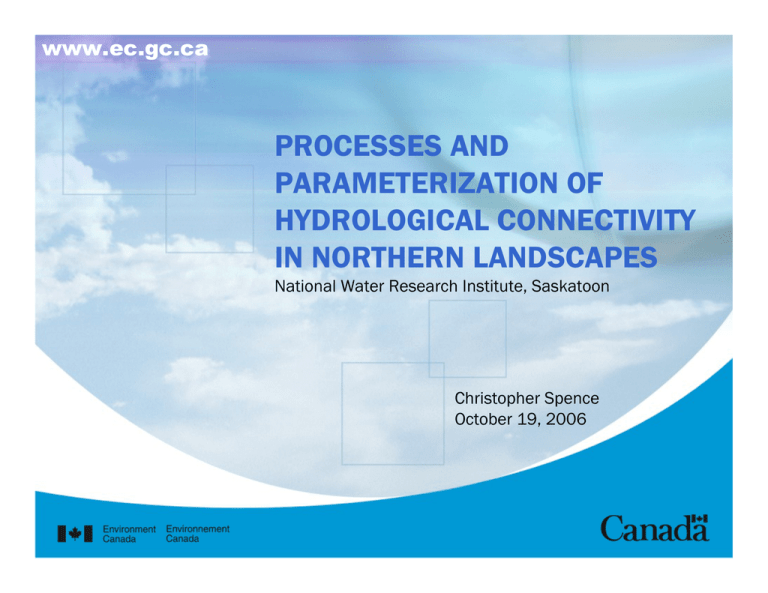
www.ec.gc.ca PROCESSES AND PARAMETERIZATION OF HYDROLOGICAL CONNECTIVITY IN NORTHERN LANDSCAPES National Water Research Institute, Saskatoon Christopher Spence October 19, 2006 Heterogeneous northern catchments 11/24/2006 Page 2 Collaborations • Sean Carey, Carleton University • Bill Quinton, Wilfred Laurier University • Phil Marsh, Environment Canada • Al Pietroniro, Environment Canada • Ken Dies, NWT Power Corporation • Bob Reid, Indian and Northern Affairs Canada 11/24/2006 Page 3 Hydrological connectivity a) b) ΔSi = Pi-Ei Ri > 0 if Si > Sci basin R = ΣRi c) lake ΔSi = Pi+Ri-1-Ei Ri > 0 if Si > Sci basin R = Rfinal i 11/24/2006 Page 4 Research Basin Land cover Water Conifers Mixed woods Deciduous forest Wetlands Tundra Exposed bedrock Recent burn Disturbed Vital Shadow Landing Lower Martin 11/24/2006 WSC gauge 07SB013 Page 5 Field instrumentation Water level and temperature Climate tower Snow course Well and soil moisture nest N Objectives / Hypotheses – Theme 1 • O1 - Determine the hydrological processes acting in water courses that could affect the streamflow response at the basin scale. • O2 - Determine how headwater and basin scale processes interact to produce streamflow at the basin scale. • H1 - Connectivity in the water course influences streamflow processes and patterns at the basin scale. • H2 - Headwater processes influence basin scale response by controlling contributing areas to the water course. 11/24/2006 Page 6 Methodology • Hydrological and hydrochemical approaches will be used to discern water sources at the landscape component and basin scales. • Supplemented with contributing area mapping using satellite imagery (ie, Radarsat). • These measurements will be used to establish storage – runoff relationships at different scales. 11/24/2006 Page 7 Objectives / Hypotheses – Theme 2 • O3 – Develop numerical representations of the processes identified in Theme 1 responsible for the streamflow regimes at the basin and/or grid scale. • O4 – Incorporate these algorithms in diagnostic and predictive models • H3 – Incorporating representation of landscape connectivity at the sub grid scale will improve water cycle simulation by environmental models • H4 – Incorporating representation of water course connectivity will improve water cycle simulation by environmental models. 11/24/2006 Page 8 Methodology • MESH and CRHM • Models parameterized and run with and without new algorithms to determine the influence of the schemes on model simulations. • Short and long simulations will be generated from which flood and low flow regimes can be generated. These will be compared with calculations of the regime using observed data. 11/24/2006 Page 9 www.ec.gc.ca 11/24/2006 Page 10
